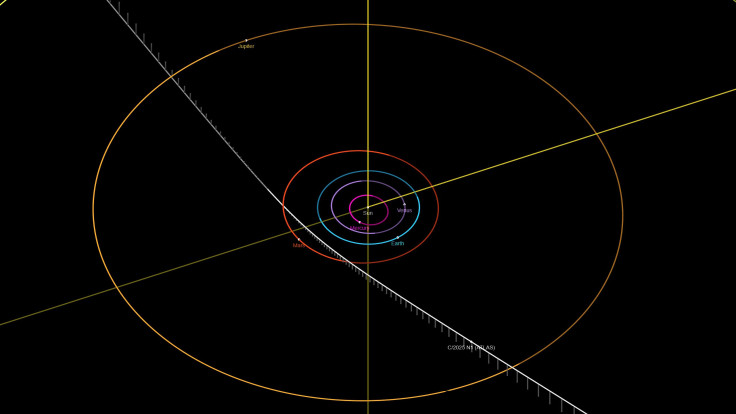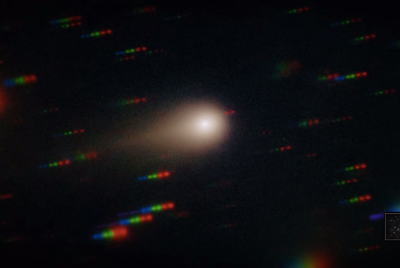Harvard Physicist Claims 3I/ATLAS Object Is 'Not Natural': Why He Is Baffled
Harvard scientist renews claims that 3I/ATLAS may be a spacecraft as it did not break up after passing close to the Sun

Since its discovery, there has been much discussion about the behaviour and movements of the interstellar comet known as 3I/ATLAS. As the comet moves through the Solar System, Harvard astrophysicist Avi Loeb suggests that the jets emanating from the comet may not be natural in origin.
On his blog, Loeb wrote an update regarding 3I/ATLAS. He suggested that the comet's unusual characteristics might be suggestive of alien or extraterrestrial life aboard the comet. Such characteristics include an 'anti-tail' and jets emerging from it, along with radio waves that were recently detected.
The latest characteristic that Loeb has noticed is in relation to the so-called jets. He indicated that even as 3I/ATLAS has already passed close to the Sun on its journey, it has not broken up as normally as expected for a comet.
'Images taken of 3I/ATLAS on 11 November 2025 show a single body, with no evidence for breakup following the perihelion passage two weeks earlier,' wrote Loeb, referring to an object's path around the Sun. 'Given that the large-scale jets reported recently, the fact that 3I/ATLAS remains a single body is surprising for a natural comet.'
Loeb suggested that the continued presence of the jets may indicate an alien spacecraft.
'Technological thrusters which point their exhaust towards the Sun would accelerate away from the Sun. This post-perihelion manoeuvre might be employed by a spacecraft that aims to gain speed rather than slow down through the gravitational assist from the Sun.'
'I suggested a "Loeb Scale" for interstellar objects where "0" is definitely a natural object (comet or asteroid) and "10" is definitely a technological object (identified by manoeuvres or emission of artificial light or signals,' Loeb continued. 'Currently, I give 3I/ATLAS a 6 on that scale, but my assessment will change as we get better data on it when it comes closer to the Sun.'
3I/ATLAS Showing Normal Comet Behaviour
While 3I/ATLAS has not broken up into pieces as Loeb has described, Qicheng Zhang, postdoctoral fellow at the Lowell Observatory, says that the comet simply did not explode.
'All the images I've seen show a fairly ordinary/healthy looking comet,' Zhang told Live Science. 'There's no sign at all that the nucleus broke apart.'
The renewed observation of 3I/ATLAS comes after the comet resurfaced in recent days, after it disappeared behind the Sun in late October. Loeb, along with other astronomers, has speculated that 3I/ATLAS's unusual behaviour might hint at the presence of extraterrestrial life on the comet. But that may not be the case, according to Zhang.
'I checked Avi Loeb's blog, and it sounds like he's just built a house of cards on top of his unfounded claim about the comet's acceleration, which was an egregious misinterpretation of the comet's orbital parameters anyone who's ever computed any comet's orbit will immediately recognise as faulty,' said Zhang.
3I/ATLAS is set to make its closest approach to Earth on 19 December.
© Copyright IBTimes 2025. All rights reserved.





















